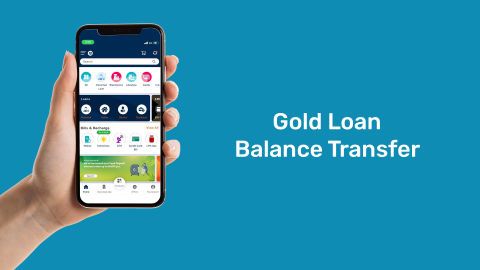2 mins
13 September 2024
Gold is a valuable asset in India, often seen as a secure investment. A gold receipt is crucial as it certifies ownership and purity of the gold. Electronic gold receipts (EGRs) introduced in India enable digital trading of gold, offering secure, transparent transactions and ease of ownership transfer.
Benefits of electronic gold receipts
Electronic Gold Receipts offer several advantages over physical gold ownership. Firstly, they eliminate the need for physical storage, as your gold is safely held in a secure vault by a trusted custodian. This removes the risk of theft or loss. Secondly, EGRs are highly liquid, allowing you to trade them easily on the exchange without the complications involved in physically selling gold. Thirdly, they provide transparency in pricing since the rates are derived from the market and not influenced by individual dealers. Additionally, EGRs enable smaller investments as they can be purchased in smaller denominations than physical gold. This opens up the gold market to more investors. Finally, they are cost-effective, as there are no making charges or wastage costs typically associated with gold jewellery or coins.
Traditional gold receipts vs. electronic gold receipts
Traditional gold receipts and Electronic Gold Receipts (EGRs) differ significantly in how they operate. Traditional receipts are usually physical documents provided by jewellers or pawnshops, indicating the gold you have purchased or deposited. These receipts may not be as secure or easily transferable. They often require physical handling and safekeeping, which comes with risks like damage or loss. On the other hand, EGRs are digital records of ownership and are backed by physical gold stored in secure vaults. They can be traded easily on recognised exchanges, offering higher liquidity. Additionally, EGRs are regulated, providing more transparency in pricing and security in transactions. Traditional receipts are less flexible when it comes to buying, selling, or transferring gold, making EGRs a more convenient and efficient option for modern investors.How do electronic gold receipts streamline the gold loan process?
Electronic Gold Receipts (EGRs) have simplified the gold loan process in several ways. Traditionally, obtaining a gold loan involved physically presenting the gold to the lender, followed by a valuation process. With EGRs, this step is entirely eliminated as the gold is already secured in a custodian's vault. Lenders can instantly verify the value of your EGRs, and since the gold is securely stored, the risk for the lender is reduced. This allows for quicker loan approvals and disbursals. EGRs also eliminate the need for transporting physical gold, reducing costs and the risk of theft. In addition, as EGRs are digitally traded, they allow for seamless pledging of gold for loans, making the process faster and more efficient. Overall, EGRs make the gold loan process less cumbersome and more secure.Navigating gold loans with and without gold receipts
Gold loans can be navigated differently depending on whether you have gold receipts or not. With a physical or electronic gold receipt, securing a loan becomes much simpler. The receipt provides proof of ownership, and the lender can verify the gold’s value easily, speeding up the loan process. It also reduces the need for physically handling or transporting gold, making the loan process more secure and less risky. Without a gold receipt, obtaining a gold loan can be more time-consuming. The lender will require a physical valuation of the gold, and the absence of proper documentation could complicate or delay the approval process. You may also need to transport your gold to the lender’s premises, which increases risks related to safety and theft. Therefore, having a gold receipt simplifies the procedure.How to obtain a gold loan with an electronic receipt?
Obtaining a gold loan with an Electronic Gold Receipt (EGR) is a straightforward process. The first step is to ensure your EGR is valid and stored with a recognised custodian. Once you have a valid EGR, approach a lender that accepts EGRs for gold loans. The lender will verify the details of your EGR, including the quantity and value of the underlying physical gold. As the gold is already stored securely in a vault, there is no need for additional valuation or security checks, speeding up the approval process. The lender will then offer you a loan amount based on the current market value of the gold. Once you agree on the terms, the loan will be disbursed quickly, often within the same day. The EGR remains pledged with the lender until the loan is repaid.What to do if you don't have a receipt for your gold?
- Obtain a valuation: If you don’t have a gold receipt, take the gold to a jeweller or bank for a proper valuation.
- Find a lender: Look for lenders who offer loans based on physical gold without the need for a receipt.
- Negotiate terms: Without a receipt, you may face more scrutiny, so be prepared to negotiate interest rates and loan terms.
- Consider a third-party certifier: If needed, some lenders may accept certification from a trusted third-party evaluator.
- Store your receipt safely next time: Keep any future receipts securely for easier loan applications in the future.
Why electronic receipts are becoming essential in the gold loan industry?
- Increased security: Electronic Gold Receipts (EGRs) eliminate the risks associated with transporting and storing physical gold.
- Streamlined process: EGRs make loan approvals faster, as lenders can verify ownership and value instantly.
- Reduced risk for lenders: With gold stored securely in vaults, lenders face fewer risks, leading to better loan terms.
- Enhanced liquidity: EGRs are easily traded on exchanges, allowing for quicker conversions into cash or loans.
- Transparency: EGRs provide market-based valuations, ensuring fair and transparent loan terms.
Frequently asked questions
What is the meaning of electronic gold receipt?
An Electronic Gold Receipt (EGR) is a digital record representing ownership of physical gold stored in a secure vault. It allows investors to trade gold on an exchange without needing to handle or store the metal physically. EGRs provide transparency, security, and liquidity, enabling easy buying and selling. Regulated by authorities, these receipts are an efficient way to invest in gold, offering a safer and more convenient alternative to traditional methods of owning physical gold.
What is a gold receipt?
A gold receipt is a document that serves as proof of ownership for a specific quantity of gold. This can be issued by a jeweller, pawnshop, or financial institution after purchasing or pledging gold. The receipt details the gold’s weight and purity. Gold receipts are crucial in transactions, particularly for securing loans against gold, as they provide lenders with the assurance that the gold is legitimate and its value can be verified before approving a loan.
How to convert physical gold to electronic gold receipt?
To convert physical gold into an Electronic Gold Receipt (EGR), you must deposit your gold with a recognised custodian. The custodian will verify the purity and weight of the gold and store it in a secure vault. Upon confirmation, an EGR will be issued in your name, reflecting your ownership of the physical gold. This digital receipt can then be traded on exchanges or used as collateral for loans. This process adds security and liquidity to your gold investments.
What is the difference between gold ETF and electronic gold receipts?
Gold ETFs (Exchange Traded Funds) and Electronic Gold Receipts (EGRs) both represent investments in gold but differ in structure. Gold ETFs are financial products that track gold prices and are traded like shares, backed by a pool of gold holdings. EGRs, on the other hand, directly represent ownership of physical gold stored in a secure vault, giving investors the ability to convert them into actual gold. EGRs offer more direct ownership, while ETFs provide broader market exposure.
Show More
Show Less
Bajaj Finserv App for All Your Financial Needs and Goals
Trusted by 50 million+ customers in India, Bajaj Finserv App is a one-stop solution for all your financial needs and goals.
You can use the Bajaj Finserv App to:
Apply for loans online, such as Instant Personal Loan, Home Loan, Business Loan, Gold Loan, and more.
You can use the Bajaj Finserv App to:
Apply for loans online, such as Instant Personal Loan, Home Loan, Business Loan, Gold Loan, and more.
- Explore and apply for co-branded credit cards online.
- Invest in fixed deposits and mutual funds on the app.
- Choose from multiple insurance for your health, motor and even pocket insurance, from various insurance providers.
- Pay and manage your bills and recharges using the BBPS platform. Use Bajaj Pay and Bajaj Wallet for quick and simple money transfers and transactions.
- Apply for Insta EMI Card and get a pre-approved limit on the app. Explore over 1 million products on the app that can be purchased from a partner store on Easy EMIs.
- Shop from over 100+ brand partners that offer a diverse range of products and services.
- Use specialised tools like EMI calculators, SIP Calculators
- Check your credit score, download loan statements, and even get quick customer support—all on the app.






